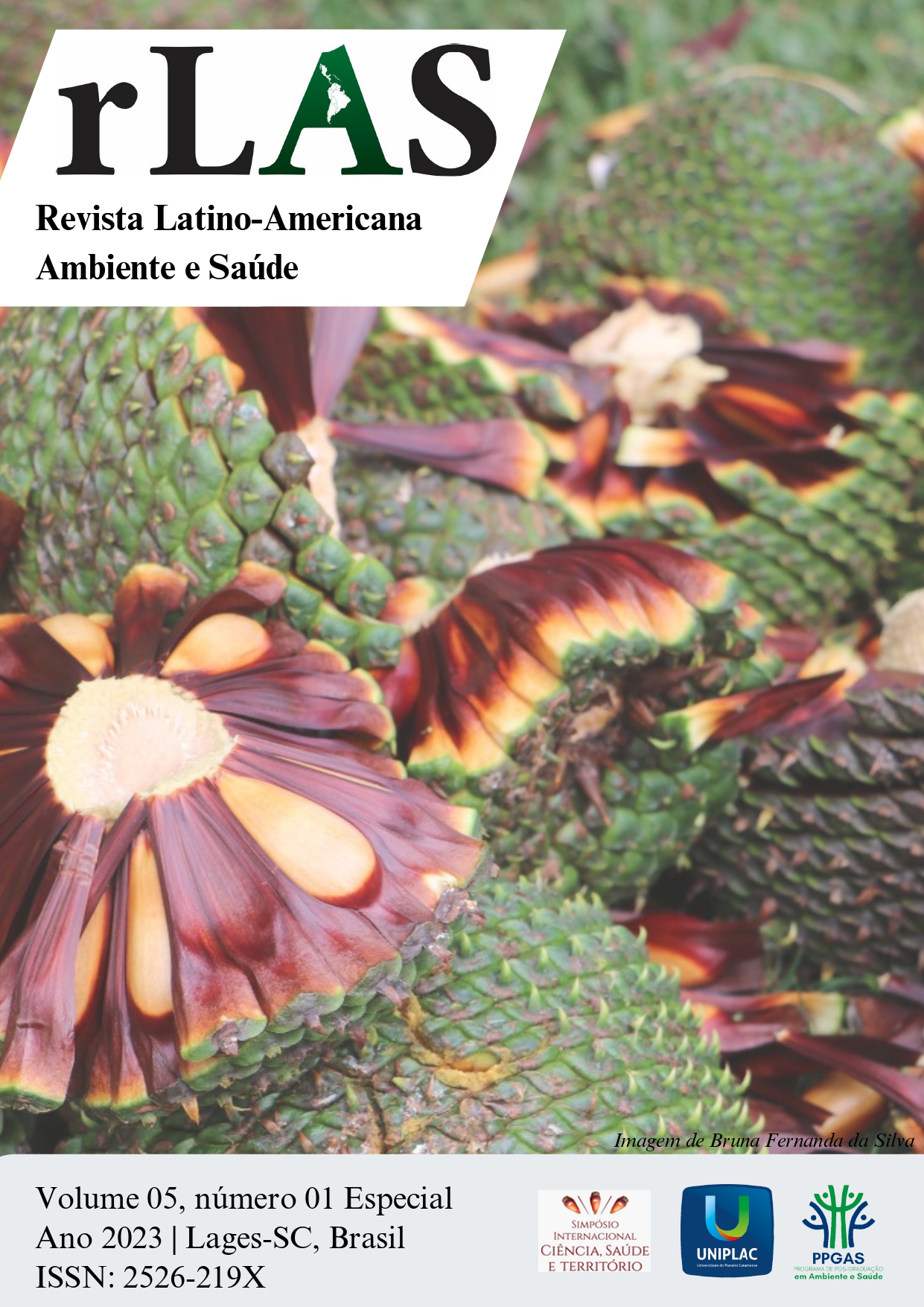Emmerging pollutants: a systemic view
Keywords:
Emerging contaminants, Environmental monitoring, Water qualityAbstract
The theme of emerging pollutants has been highlighted as research shows the effect of
these compounds on aquatic organisms, implying effects on the human body. It is
common knowledge in the scientific community that conventional effluent and water
treatments are notable to remove these compounds, causing a cycle of emerging pollutants
in the environment. This article aims to analyze this cycle, highlighting the role of water
and the influence of basicsanitation in reducing the number of ways that allow the
contamination of the environment bythese compounds. The analysis of the cycle of
emerging pollutants in the environment shows that these compounds should be removed
before being dumped into water bodies, avoiding effects on aquatic organisms, although,
there would still be a presence of these compounds in water bodies due to the reception
of surface runoff from areas of agriculture that receive pesticides, leading to the
conclusion that the problem is not so easy to solve. Make it possible for households to
access the sewage collection network, in order to concentrate these compounds in a single
way, implement advanced treatments in domestic effluents, encourage the use of
agricultural pesticides with formulations that do not contain these compounds and
implement monitoring programs, in order to observe the concentration and effects of these
compounds in watercourses, these would be actions that would address short-term results.
References
BISOGNIN, R. P.; WOLFF, D. B.; CARISSIMI, E. Revisão sobre fármacos no ambiente. Revista DAE, v. 66, n. 210, p. 78-95, abr/jun 2018.
CARTAXO, A.S. B. et al. Contaminantes emergentes presentes em águas destinadas ao consumo humano: ocorrência, implicações e tecnologias de tratamento. Brazilian Journal of Development, v. 6, n. 8, p.61814-61827, ago. 2020.
CORONADO-APODACA, K. G. et al. Occurrence, transport anddetection techniques of emerging pollutants in groundwater. MethodsX, v. 10, 2023.
EMBRAPA. Contaminantes emergentes podem ser uma ameaça na água para consumo humano. 2018. Disponível em: https://www.embrapa.br/busca-de-noticias/- /noticia/32796742/contaminantes-emergentes-podem-ser-uma-ameaca-na-agua-paraconsumo-humano
G1. Número de agrotóxicos registrados em 2020 é o mais alto da série histórica; maioria é genérico, diz governo. 2021. Disponível em: https://g1.globo.com/economia/agronegocios/noticia/2021/01/14/numero-deagrotoxicos- registrados-em-2020-e-o-mais-alto-da-serie-historica-maioria-e-produtogenerico.ghtml.
IBAMA. Relatório de comercialização de agrotóxicos. Brasília/DF, 2020. Disponível em:https://www.gov.br/ibama/pt-br/assuntos/quimicos-ebiologicos/agrotoxicos/relatorios-de-comercializacao-de-agrotoxicos.
LU, J. et al. Iron-based biochar as efficient persulfate activation catalyst for emerging pollutants removal: a review. Chinese Chemical Letters, mar.2023.
MARSON, E. et al. Areview toward contaminants of emerging concern in Brazil: Ocurrence, impact and their degradation by advanced oxidation process in aquatic matrizes. Science of The Total Environment, v. 836, ago. 2022.
MONTAGNER, C. C.; VIDAL, C.; ACAYABA, R. D. Contaminantes emergentes em matrizes aquáticas do Brasil: cenário atual e aspectos analíticos, ecotoxicológicos e regulatórios. Revista Química Nova, v. 40, n. 9, p. 1094-1110, 2017.


